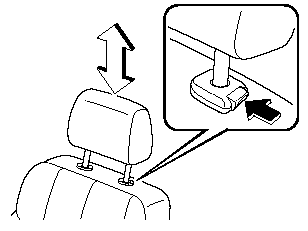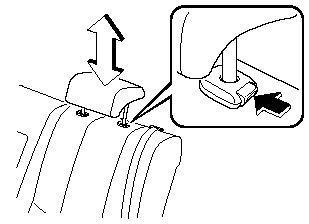Head Restraints
Head restraints are intended to help protect you and the passengers from neck injury.
WARNING:
Always drive with the head restraints
installed when seats are being used
and make sure they are properly
adjusted:
Driving with the head restraints
adjusted too low or removed is
dangerous. With no support behind
your head, your neck could be
seriously injured in a collision.
Height adjustment
To raise a head restraint, pull it up to the desired position.
To lower the head restraint, press the stopcatch release, then push the head restraint down.
Adjust the head restraint so that the top is even with the top of the passenger's ears, never the passenger's neck to prevent injury.

Front seat

Rear seat
See also:
Head Restraints
* Some models.
Head restraints are intended to help
protect you and the passengers from neck
injury.
WARNING:
Always drive with the head restraints
installed when seats are being used
and make ...
Tire Pressure Monitoring System
The tire pressure monitoring system (TPMS) monitors the pressure for each
tire.
If tire pressure is too low in one or more tires, the system will inform the
driver via the
warning light in the i ...
Jump-Starting
Jump-starting is dangerous if done incorrectly. So follow the procedure
carefully. If you
feel unsure about jump-starting, we strongly recommend that you have a competent
service
technician do t ...


